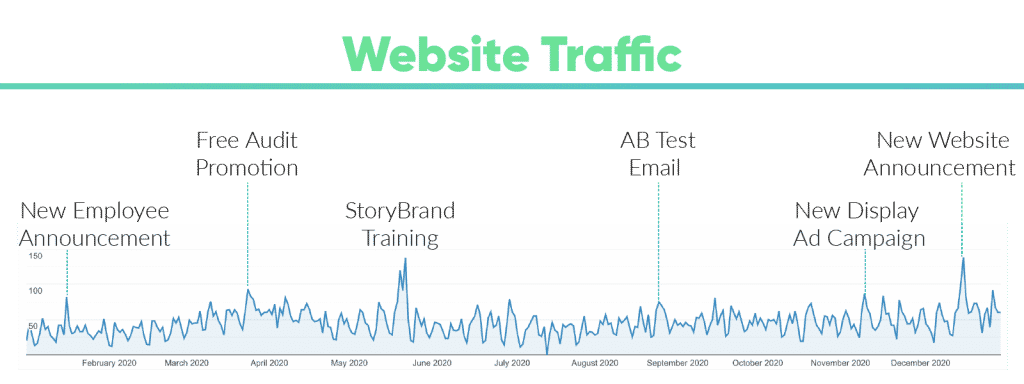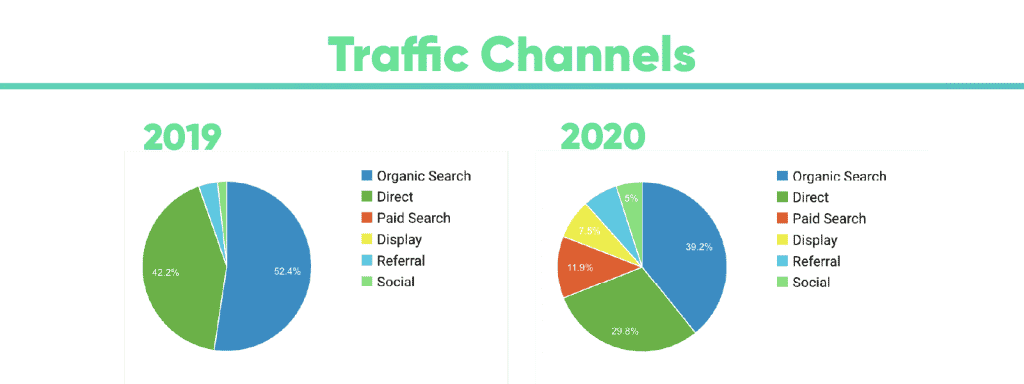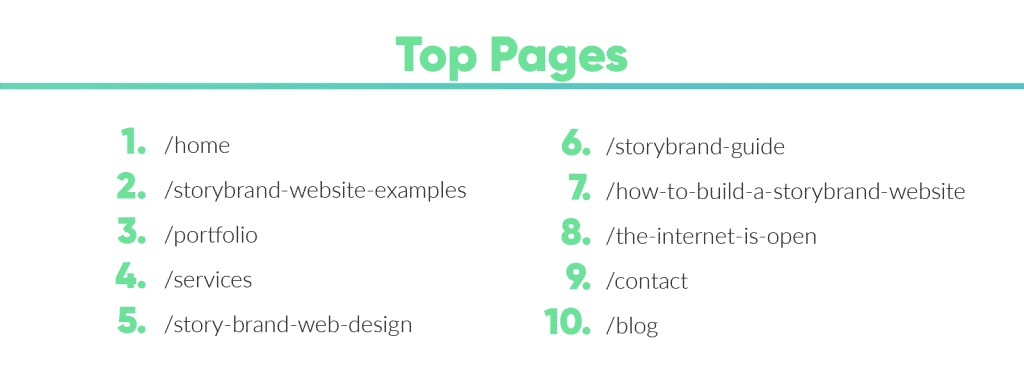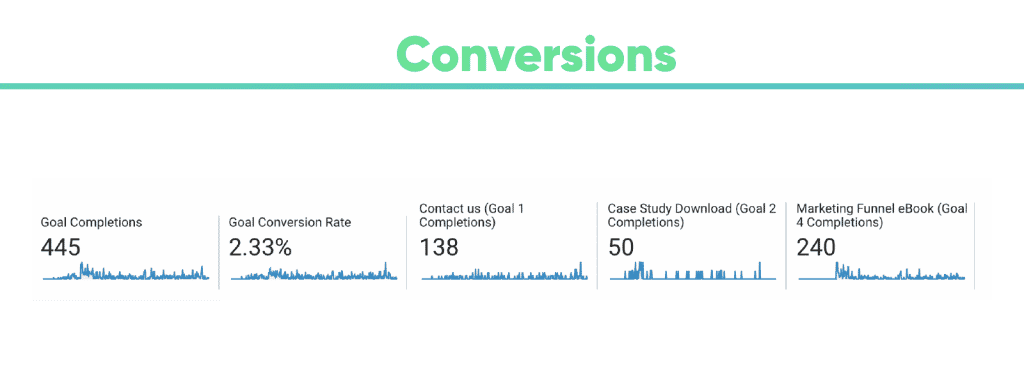How to Read Google Analytics to Boost This Year’s Marketing Strategy
Jan 11, 2021
Google Analytics Doesn’t Have to Be That Hard
One of my favorite things to do at the beginning of a new calendar year is to look at the previous year’s data. There is so much we can learn from past performance, but did you know that just a little over half of all companies are using data to inform their business decisions? Are you one of the ones not using data? The first step to increasing your marketing performance is to understand what is working or not working in your marketing and the best place to start in deciphering that information in Google Analytics. It may feel intimidating at first, but with some simple training, you can improve your website performance by learning what story your website data has to tell you.
1. Where is your website traffic coming from and what were the big changes?
Understanding your website traffic is a great first step to seeing what’s working or not working with your marketing. A simple year-over-year comparison will tell you if you are generating more traffic to your website or not. Then the question is why has the traffic number gone down or not? Did you pause your marketing spend in 2020? Did you double down? The other important thing to look at is what spikes you had in traffic from the previous year and again, ask yourself why. Below is an example of the Banker Creative traffic and why we saw spikes when we did. Looking back at those increases in traffic will help us better prepare ourselves for likely increases in 2021. For example, the next time we run a StoryBrand training, we may want to have a special offer for those attendees on the website, knowing that we’ll be getting a lot of them checking out our services. Because of Google Analytics, we also know that StoryBrand trainings are a good boost for our traffic, so we should do more of that in 2021.

2. What is causing your bounce rate to go up or down?
One item of interest within your Google Analytics: Bounce rate. The bounce rate on your website will tell you if your site is sticky or not. Meaning, are your users taking an action before leaving the website. If the bounce rate is high, it means there was nothing compelling enough on the website to encourage a user to action. If it is low, that means your users are engaged enough to take an action before leaving the website. It depends on your industry and what calls-to-action you have set up on your website as to what is a healthy bounce rate, so compare year-over-year to see if your bounce rate is going up or down. You can improve your bounce rate by giving away free content on your website, such as an ebook or free assessment.
3. Do you have a balanced portfolio of channels driving traffic?
If you were given the option to buy stock in one company vs diversifying your portfolio among several different companies, which one would you choose? It’s a no brainer. Similarly, you don’t want to be too reliant on any one marketing channel driving traffic to your website. Below is a chart on how we took one company’s channels and helped build where they were weakest so that the portfolio of channels was more balanced among all traffic. If you find that your Google Analytics looks more similar to the pie chart on the left, then it is time to start investing into additional channels in your marketing. On average, it takes seven different touchpoints from a brand for a consumer to make a decision on whether or not they want to use that product or service. So the more touchpoints you have with that person, the closer they are go buying.

4. Are you leveraging your top pages to boost SEO?
Seeing what pages are generating the most traffic is a great way to know where to start your SEO efforts in 2021. Before trying to fix your weakest link, double down on the pages that are working well. Take a look at your top 5-10 pages on your website and go through one by one updating content to be as relevant to the present as possible and SEO optimize to reflect this year’s keyword strategy. This could be as simple as taking the five keywords you are going after in 2021 and making sure those keywords show up (in a natural human way) on your top landing pages. This report will also give you a great indication for what you are ranking for in terms of SEO right now and what your users are most attracted to that you offer. Using this report as a guide could help you know what content and services to focus on this year.

5. Are your calls to action working? Are you even tracking conversion performance?
Traffic is important and can offer some great insights into your users and how you are driving new customers to your website. However, at the end of the day, we want people to be taking action on our websites. Some of you may not have conversions set up on your website, but if you do, this is one of the most important reports to look at in your Google Analytics.

Now What?
Once you’ve looked at your Google Analytics, what’s next? Ideally, you’d be doing a similar analysis on each of your marketing channels by looking at analytics and performance on each one. If you’re not quite there yet, run with what you know. Start thinking about where you need to improve based on what you’ve seen on your website. Do you need more traffic? Do you need to boost conversion from the traffic you are getting? Do you need to create more compelling calls-to-action to decrease your bounce rate? Do you need to update your top pages to improve SEO? Start making a list of things to improve on based on what you’ve learned and prioritize. Now, you can just chip away one at a time, either once a week or a couple of times a week depending on how ambitious you are.
Still need help? Send us an email.
Share:

StoryBrand Websites
to help your business grow

The Internet is Open
How to Get More Sales with a Marketing Funnel
Your business deserves to be around for the long haul.
That’s why we created this guide. Get more sales with a strong marketing funnel. We’ll show you how.
